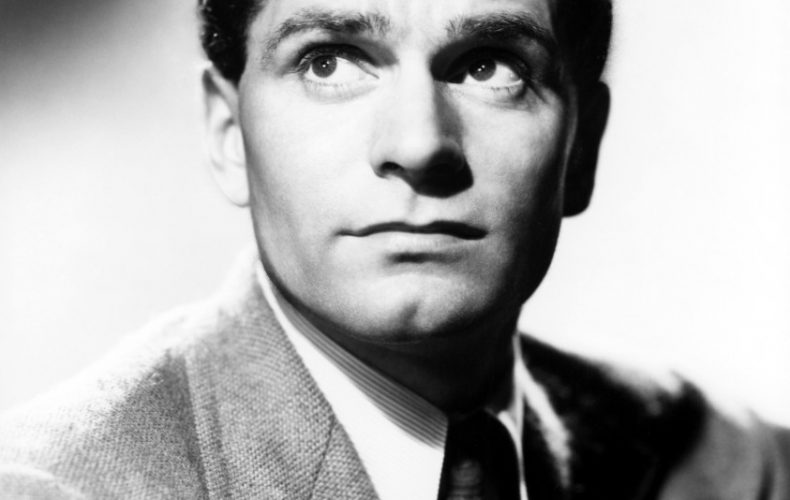Being back in New York City for a couple of weeks there, a first trip back from Dublin after living in NYC for ten years, it was interesting how amidst all the amazing things to do there, I gravitated back to my favourite old haunts. So I thought I’d make a list of my personal ten recommended spots in Manhattan, and then realized this would make an amazing (if pretty packed) day in the city.
Warning: this doesn’t include any tourist book must-sees (no Met, Central Park, Times Square, Little Italy, Magnolia Bakery) and it helps if you love coffee, books and walking …
Presenting: Paul’s amazing day in New York City!
1. Joe Coffee on 23rd Street for your a.m. espresso

We’re up early into the brisk morning air, we’ve rode the subway (eek), taken the PATH train from Jersey (not so bad), rode a Citibike (watch your elbows) or taken a taxi (slowww), and now we’re smugly strolling through Chelsea past all the poor folks rushing to work (c’mon, this is a holiday for us, woo-hoo!) and into the warm, welcoming doors of Joe Coffee on 23rd Street and 9th Avenue at 9a.m. Sure, it’s a chain, but it’s a local NYC chain in baby blue, and this particular spot is the cafe I spent more time in than any other in the city (enough that they knew my order, possibly not a good thing), nabbing a lovely cappuccino before heading to rehearsals at the cell theatre. The coffee here is consistently great and they somehow manage to find sweet, friendly and generous hipsters to work there. If you’ve skipped breakfast, their rosemary scone is your new friend (that you’ll eat). Have a glance through the New York Times (and read the soccer articles on your phone), and enjoy.
2. Head north for a morning perusing the Drama Book Shop
 We head out the door and west on 23rd Street to 10th Avenue, we’re heading uptown now, so why not use the Highline as a funkily pretty way to get from 23rd to 30th Streets. (As bonus, at the corner of 23rd and 10th, you’ll find the Chelsea Barbers, a great old-fashioned men’s barbers, where the hairdressers wear white coats and they play smooth jazz, a sanctum worth remembering for the next time you need your locks chopped). We’ll use 10th Avenue to get to 39th Street before cutting across to 8th Avenue, thereby largely steering clear of the belching ugly sisters, Penn Station and Port Authority. East on 40th Street and we duck into that wonder of wonders for any theatre-lover, the Drama Book Shop, at 10a.m. Let’s spend the next couple of hours perusing its shelves packed with more plays than any other bookshop, in the rainbow of colours that Dramatists Play Service print in, not to mention a huge array of books on acting, theatre and film, and let’s grab a couple and read a bit at one of the comfy chairs. Of course, you’ll be distracted every few pages by the expert staff pointing some young actor to a hot or obscure play where they’ll find a monologue just right for them, and you’ll just be surrounded by a constantly enchanting melody of people talking with love, snarkiness and passion about theatre. Almost as good as being on stage. (Almost).
We head out the door and west on 23rd Street to 10th Avenue, we’re heading uptown now, so why not use the Highline as a funkily pretty way to get from 23rd to 30th Streets. (As bonus, at the corner of 23rd and 10th, you’ll find the Chelsea Barbers, a great old-fashioned men’s barbers, where the hairdressers wear white coats and they play smooth jazz, a sanctum worth remembering for the next time you need your locks chopped). We’ll use 10th Avenue to get to 39th Street before cutting across to 8th Avenue, thereby largely steering clear of the belching ugly sisters, Penn Station and Port Authority. East on 40th Street and we duck into that wonder of wonders for any theatre-lover, the Drama Book Shop, at 10a.m. Let’s spend the next couple of hours perusing its shelves packed with more plays than any other bookshop, in the rainbow of colours that Dramatists Play Service print in, not to mention a huge array of books on acting, theatre and film, and let’s grab a couple and read a bit at one of the comfy chairs. Of course, you’ll be distracted every few pages by the expert staff pointing some young actor to a hot or obscure play where they’ll find a monologue just right for them, and you’ll just be surrounded by a constantly enchanting melody of people talking with love, snarkiness and passion about theatre. Almost as good as being on stage. (Almost).
3. Lunch at Piccolo Cafe on 40th Street
 Okay, it’s 12.30pm and I’m hungry now. I could grab a tasty salmon tartine at Le Pain Quotidien on 40th Street, or a quick tuna baguette at a Pret a Manger, but you know what? I want something hot and tasty and cheap and … next door. So I step into the aptly named (cos it’s tiny) Piccolo Cafe, and order #1, a Fettuccine alla Bolognese (with no cheese, thank you very much) and grab a window counter stool to watch the world (and look at the vintage Italian newspapers on the wall). Pretty darn sharp, the pasta comes out, juicily steaming, and we tuck into its homey deliciousness. Yum.
Okay, it’s 12.30pm and I’m hungry now. I could grab a tasty salmon tartine at Le Pain Quotidien on 40th Street, or a quick tuna baguette at a Pret a Manger, but you know what? I want something hot and tasty and cheap and … next door. So I step into the aptly named (cos it’s tiny) Piccolo Cafe, and order #1, a Fettuccine alla Bolognese (with no cheese, thank you very much) and grab a window counter stool to watch the world (and look at the vintage Italian newspapers on the wall). Pretty darn sharp, the pasta comes out, juicily steaming, and we tuck into its homey deliciousness. Yum.
4. Dessert is Culture Espresso cookies in Bryant Park
 Okay, I’m fighting fit for the afternoon … well, almost, let’s grab a cheeky dessert. Only one option here, you can leave your macarons and cronuts, let’s shally down to 38th Street and 6th Avenue, and join the queue (or to speak NYC, get in line) for the best chocolate cookies in the city. They are perfection: fresh-baked in-house, huge, crispy on the outsides, melty-warm on the inside, and frankly one of them is too rich for most men. If it’s a fine dry day, let’s grab them in their paper bag to-go, with your beverage of choice (flat-white, please), and head north two blocks to Bryant Park. Let’s sit by (or if it’s summertime on) the lawn, and enjoy my favourite park in the city, which somehow always manages to breeze midtown madness away and blow any of the city’s stresses off of me. Chill out gazing through the dappled branches of the trees, knowing that Batman definitely hangs out at night on top of that big gothic tower on the south side of the park. (Sure, Central Park is more awesome, but it’s also kind of a big deal, you have to explore into it. Bryant is quite happy to welcome you for a minute or ten. I think that would hurt Central Park’s feelings …)
Okay, I’m fighting fit for the afternoon … well, almost, let’s grab a cheeky dessert. Only one option here, you can leave your macarons and cronuts, let’s shally down to 38th Street and 6th Avenue, and join the queue (or to speak NYC, get in line) for the best chocolate cookies in the city. They are perfection: fresh-baked in-house, huge, crispy on the outsides, melty-warm on the inside, and frankly one of them is too rich for most men. If it’s a fine dry day, let’s grab them in their paper bag to-go, with your beverage of choice (flat-white, please), and head north two blocks to Bryant Park. Let’s sit by (or if it’s summertime on) the lawn, and enjoy my favourite park in the city, which somehow always manages to breeze midtown madness away and blow any of the city’s stresses off of me. Chill out gazing through the dappled branches of the trees, knowing that Batman definitely hangs out at night on top of that big gothic tower on the south side of the park. (Sure, Central Park is more awesome, but it’s also kind of a big deal, you have to explore into it. Bryant is quite happy to welcome you for a minute or ten. I think that would hurt Central Park’s feelings …)
*Alternate option when they re-open: the Cupcake Cafe on 9th and 41st, where you can get a great cupcake, artfully decorated with flowers, in one of the city’s bastions of old-school Gotham, with a grouchy, burly, white-bearded old barista straight out of a Hemingway bar, who queries your very existence but is also very happy to jollily natter about soccer, theatre, baseball and old movies. After your chat, take your La Colombe beverage and vanilla cupcake with chocolate frosting to a mismatched table in one of the nooks and crannies. And make sure you pull a good book out of your bag.
5. Take a breath in the New York Public Library Rose Reading Room.
 Well-fed by 2p.m., let’s take the afternoon for spot of cultural spirit-lifting. First step, nip around the corner of 40th Street to 5th Ave, to the New York Public Library. Say a quick hello to my two regal pals, the lion statues, trot up the steps (exercise done for today), up some more stairs inside (exercise done for tomorrow), and into the stunning beauty of the Rose Reading Room. Nearly 300 foot long, 50 feet high, it’s a great deep-breathing space, filled with a powerful quiet, a church of thought; it’s just the most marvellous place in the city if you need a great wooden table to sit and study at, knowing how many other minds have turned their cogs and scratched their pencils here in this mighty echoing space. Try not to squeak the chair as you leave …
Well-fed by 2p.m., let’s take the afternoon for spot of cultural spirit-lifting. First step, nip around the corner of 40th Street to 5th Ave, to the New York Public Library. Say a quick hello to my two regal pals, the lion statues, trot up the steps (exercise done for today), up some more stairs inside (exercise done for tomorrow), and into the stunning beauty of the Rose Reading Room. Nearly 300 foot long, 50 feet high, it’s a great deep-breathing space, filled with a powerful quiet, a church of thought; it’s just the most marvellous place in the city if you need a great wooden table to sit and study at, knowing how many other minds have turned their cogs and scratched their pencils here in this mighty echoing space. Try not to squeak the chair as you leave …
6. An afternoon wandering in awe in the Morgan Library
 … and from one august institution to another: we cut east to Madison Avenue and down to 36th Street, where we enter my favourite museum in the city, the Morgan Library. Of course the Guggenheim and MOMA are amazing for modern art, you can get lost in the Met, and I also have a soft spot for the Society of Illustrators, but the exhibitions at the Morgan always seem to be about the inside track of an artist’s process and practice, which utterly fascinates me, and their acquisitions are astonishing – to see the crossed-out notes and crumpled drafts of great artists is just revelatory, such a gift. I’ve been able to see there the very handwriting and working ideas of Austen, Dickens, Shelley, Twain, Hemingway, Salinger, Tolkein; a first Folio of Shakespeare; sketches by Da Vinci, Lichtenstein and Pollock; not to mention the private letters and speech copies of great leaders like Churchill and Lincoln. And alongside these, you can go into two magical permanent spaces: the library which is like something from Hogwarts, and Pierpont Morgan’s imperious office, both amazing and atmospheric, fruit for thought in themselves. Always inspiring.
… and from one august institution to another: we cut east to Madison Avenue and down to 36th Street, where we enter my favourite museum in the city, the Morgan Library. Of course the Guggenheim and MOMA are amazing for modern art, you can get lost in the Met, and I also have a soft spot for the Society of Illustrators, but the exhibitions at the Morgan always seem to be about the inside track of an artist’s process and practice, which utterly fascinates me, and their acquisitions are astonishing – to see the crossed-out notes and crumpled drafts of great artists is just revelatory, such a gift. I’ve been able to see there the very handwriting and working ideas of Austen, Dickens, Shelley, Twain, Hemingway, Salinger, Tolkein; a first Folio of Shakespeare; sketches by Da Vinci, Lichtenstein and Pollock; not to mention the private letters and speech copies of great leaders like Churchill and Lincoln. And alongside these, you can go into two magical permanent spaces: the library which is like something from Hogwarts, and Pierpont Morgan’s imperious office, both amazing and atmospheric, fruit for thought in themselves. Always inspiring.
7. Al fresco dinner at Shake Shack on Madison Square Park
 Okay, it’s 5p.m., evening is calling, so it’s time to start heading back downtown. Let’s keep nipping down the relatively quiet Madison Avenue, until we hit the north-east corner of Madison Square Park. Mmmm, yes, I’m hungry too. Let’s walk south along the winding paths to the silver-grey shack with the sand and fairy lights, and get in line (this is New York, people) for a Shake Shack burger. Yes, there are other outlets in the city, and even in the airport now, so maybe it’s not so extraordinary. But (old man voice) “I remember when this was the only Shake Shack in the city, and it was only open in the summer. Arr.” And there still is something special about people’s excitement in the queue (sorry, in line) and then the buzz (the actual electric buzz of the alerting device) of seeing your burger is ready, and eating it out in the grassy open as the sun starts setting over the skyscrapers. (Two tricks: I never eat the last bite of a Shake Shack burger, for some reason it’s always disappointingly slimy-greasy. Put it down with a bow of respect to the other bites of salty-niceness. And don’t feed the squirrels. They’re NYC squirrels. They’ll just come and take your food. One jumped right into my lap once. Felt his claws through my jeans.)
Okay, it’s 5p.m., evening is calling, so it’s time to start heading back downtown. Let’s keep nipping down the relatively quiet Madison Avenue, until we hit the north-east corner of Madison Square Park. Mmmm, yes, I’m hungry too. Let’s walk south along the winding paths to the silver-grey shack with the sand and fairy lights, and get in line (this is New York, people) for a Shake Shack burger. Yes, there are other outlets in the city, and even in the airport now, so maybe it’s not so extraordinary. But (old man voice) “I remember when this was the only Shake Shack in the city, and it was only open in the summer. Arr.” And there still is something special about people’s excitement in the queue (sorry, in line) and then the buzz (the actual electric buzz of the alerting device) of seeing your burger is ready, and eating it out in the grassy open as the sun starts setting over the skyscrapers. (Two tricks: I never eat the last bite of a Shake Shack burger, for some reason it’s always disappointingly slimy-greasy. Put it down with a bow of respect to the other bites of salty-niceness. And don’t feed the squirrels. They’re NYC squirrels. They’ll just come and take your food. One jumped right into my lap once. Felt his claws through my jeans.)
(And if you need dessert after this, you can nip across the street to Eataly, where they have a nummy and adorable little tiramisu in a cup).
*I never claimed this was a healthy-eating day in the city. Look for low-carb options on Yelp.
8. An early evening perusal at The Strand
 It’s 6p.m. And the city is starting to get hectic again as people get out of work and head to activities in the bright lights. We’re walking down Broadway, past the Flatiron building, down to and through Union Square, and down to 12th Street, where we are welcomed by the red banner of the Strand Bookstore. They say it’s 18 miles of books, and its packed shelves, the top rows too high to reach (without a staff-member clambering up a ladder), and its second-hand nature meaning you’ll often find a book here that’s been on your list for ages that’s (a) out-of-print and (b) on sale. I’m always enticed and amazed by the depth of their theatre and movie book section; their comicbook section used to be about the level of an average yard sale, but it has improved dramatically; and I think a book lover on any topic – history, art, sports and definitely novels – will be in bliss caressing the shelves and likely to leave with a heavy bag. And they have great events with authors in their rare book space: I once saw Paul Auster (my favourite novelist) discussing Beckett there with Edward Albee. (Now that is an “Only-in-New-York” experience.) Yes, there are many great bookshops in NYC (such as the impeccable McNally Jackson, the super-knowledgable Three Lives, the sprawling Housing Works, or the dreamy children’s bookshop Books of Wonder, plus a shout-out to neighbourhood superstar WORD – can you guess I like bookshops?) but the Strand is a special kind of musty labyrinth joy.
It’s 6p.m. And the city is starting to get hectic again as people get out of work and head to activities in the bright lights. We’re walking down Broadway, past the Flatiron building, down to and through Union Square, and down to 12th Street, where we are welcomed by the red banner of the Strand Bookstore. They say it’s 18 miles of books, and its packed shelves, the top rows too high to reach (without a staff-member clambering up a ladder), and its second-hand nature meaning you’ll often find a book here that’s been on your list for ages that’s (a) out-of-print and (b) on sale. I’m always enticed and amazed by the depth of their theatre and movie book section; their comicbook section used to be about the level of an average yard sale, but it has improved dramatically; and I think a book lover on any topic – history, art, sports and definitely novels – will be in bliss caressing the shelves and likely to leave with a heavy bag. And they have great events with authors in their rare book space: I once saw Paul Auster (my favourite novelist) discussing Beckett there with Edward Albee. (Now that is an “Only-in-New-York” experience.) Yes, there are many great bookshops in NYC (such as the impeccable McNally Jackson, the super-knowledgable Three Lives, the sprawling Housing Works, or the dreamy children’s bookshop Books of Wonder, plus a shout-out to neighbourhood superstar WORD – can you guess I like bookshops?) but the Strand is a special kind of musty labyrinth joy.
(And if you get out of there a little early, a great next shopping stop is Blick art materials on 13th Street. So many lovely pencils and paints and journals and stationary. You may not want to bring your credit card in there…)
9. See a play at Barrow Street Theatre
 Okay gone 7p.m., it’s the evening in New York, so that means: you’re going to see a show. (Phew, thankfully you already bought your ticket!) For some people, that would mean leaping in a cab back up to Broadway, and that’s fun, but my pick is for us to keep walking west on 12th Street, then south on 5th Avenue, cut through the NYU students and general amusing weirdos in Washington Square Park to head west on 4th Street until we take a left on Barrow Street, and arrive at the theatre of the same name. It doesn’t look like much from the outside – wait, is this a school hall? But once we get inside this magic little venue, intimately seating 199, each time set up differently, you know you are going to see a cracking good play, as programmed by Scott Morfee and Tom Whirtshafter (and maybe if we’re lucky directed by David Cromer). I’ve seen an terrific run of shows there: Cromer’s Our Town, Tribes and The Effect; The Flick; Every Brilliant Thing, each one intriguing, theatrical and impactful.
Okay gone 7p.m., it’s the evening in New York, so that means: you’re going to see a show. (Phew, thankfully you already bought your ticket!) For some people, that would mean leaping in a cab back up to Broadway, and that’s fun, but my pick is for us to keep walking west on 12th Street, then south on 5th Avenue, cut through the NYU students and general amusing weirdos in Washington Square Park to head west on 4th Street until we take a left on Barrow Street, and arrive at the theatre of the same name. It doesn’t look like much from the outside – wait, is this a school hall? But once we get inside this magic little venue, intimately seating 199, each time set up differently, you know you are going to see a cracking good play, as programmed by Scott Morfee and Tom Whirtshafter (and maybe if we’re lucky directed by David Cromer). I’ve seen an terrific run of shows there: Cromer’s Our Town, Tribes and The Effect; The Flick; Every Brilliant Thing, each one intriguing, theatrical and impactful.
10. A jazzy, ping-pongy drink at Fat Cat
 It’s heading towards 11p.m., we’re pumped full of ideas – let’s grab a nightcap. We’re in the Village, the place is sprawling with bars – but let’s go to a personal favourite: a 3 minute walk up 7th Avenue and onto Christopher Street, then down the rickety stairs into Fat Cat. Sure, it’s kind of a dive, but where else can you grab a drink, play ping-pong AND listen to some pretty darn good live jazz at the same time? Scruffy greatness.
It’s heading towards 11p.m., we’re pumped full of ideas – let’s grab a nightcap. We’re in the Village, the place is sprawling with bars – but let’s go to a personal favourite: a 3 minute walk up 7th Avenue and onto Christopher Street, then down the rickety stairs into Fat Cat. Sure, it’s kind of a dive, but where else can you grab a drink, play ping-pong AND listen to some pretty darn good live jazz at the same time? Scruffy greatness.
Right, phew, I don’t know about you, but I’m bushed. That good kind of tired from a full day. Time for bed.
Wait, where are we staying again?
***
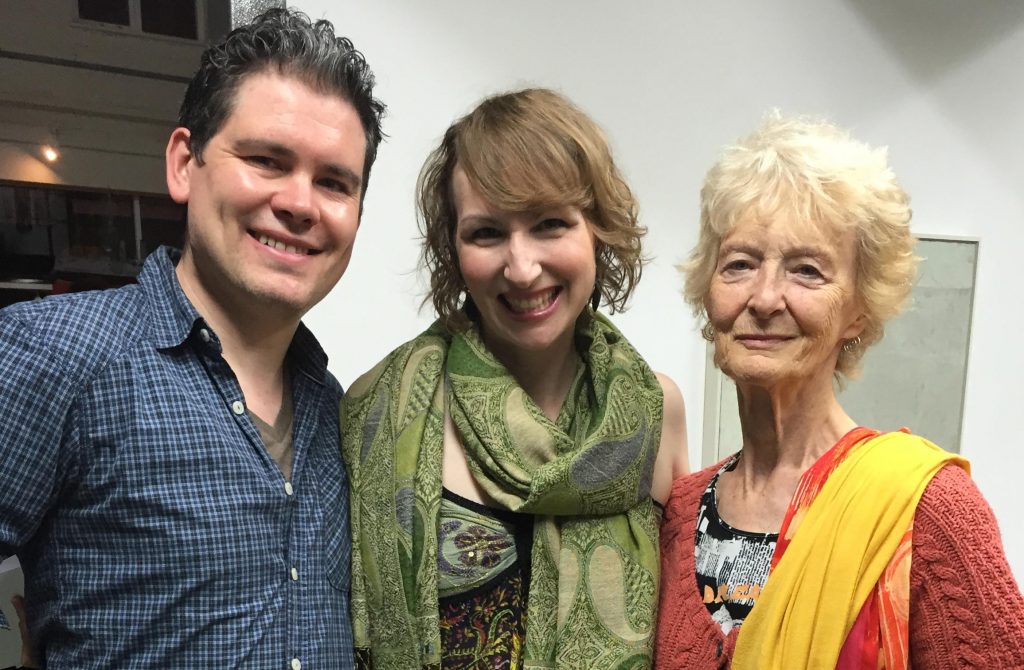

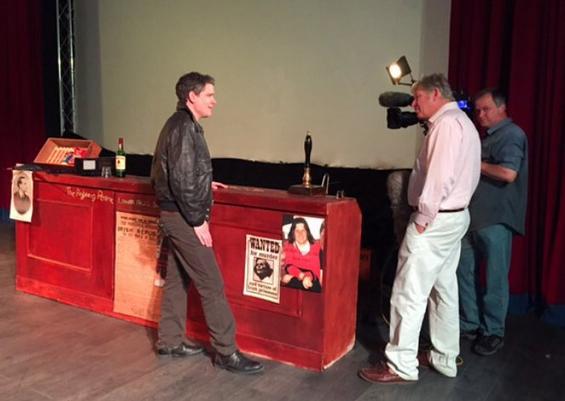
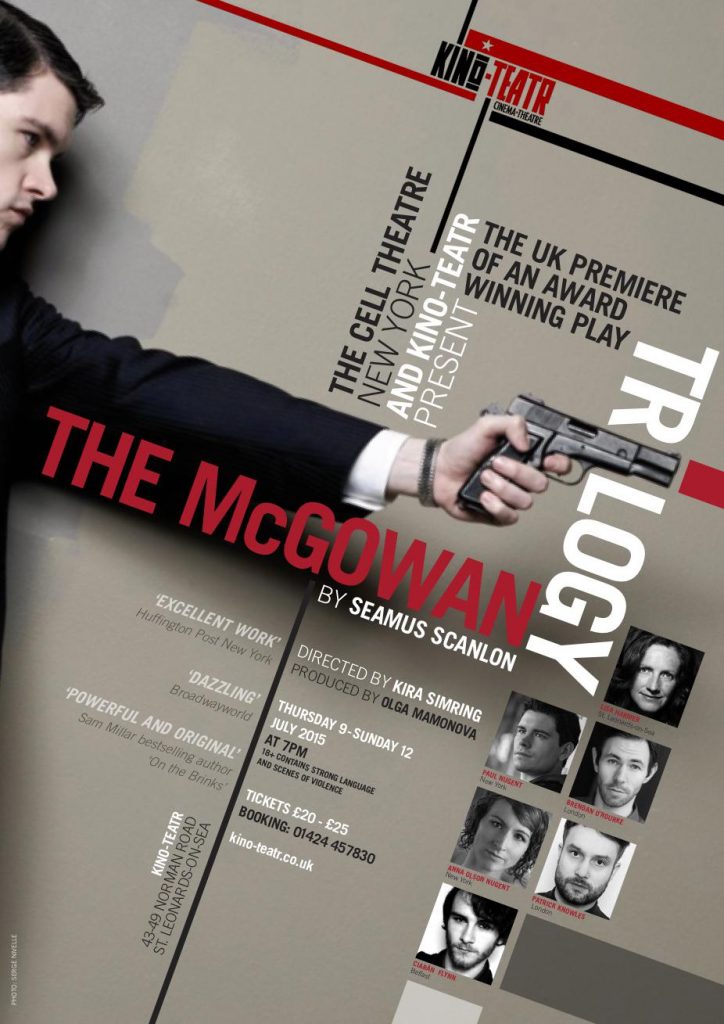
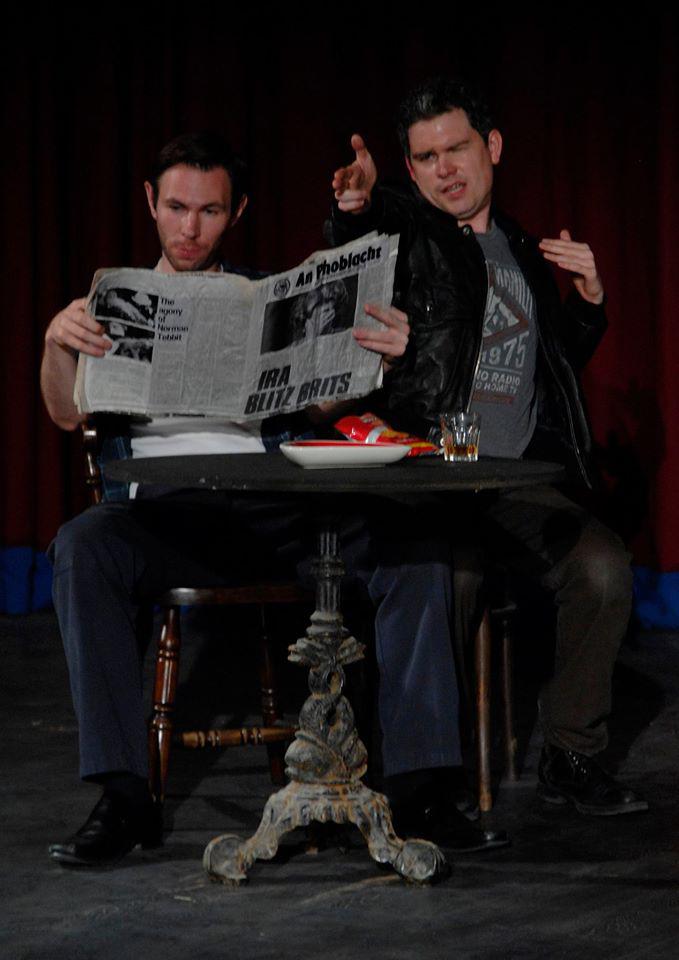
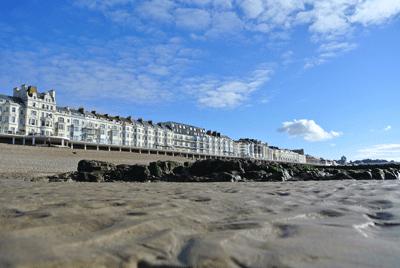
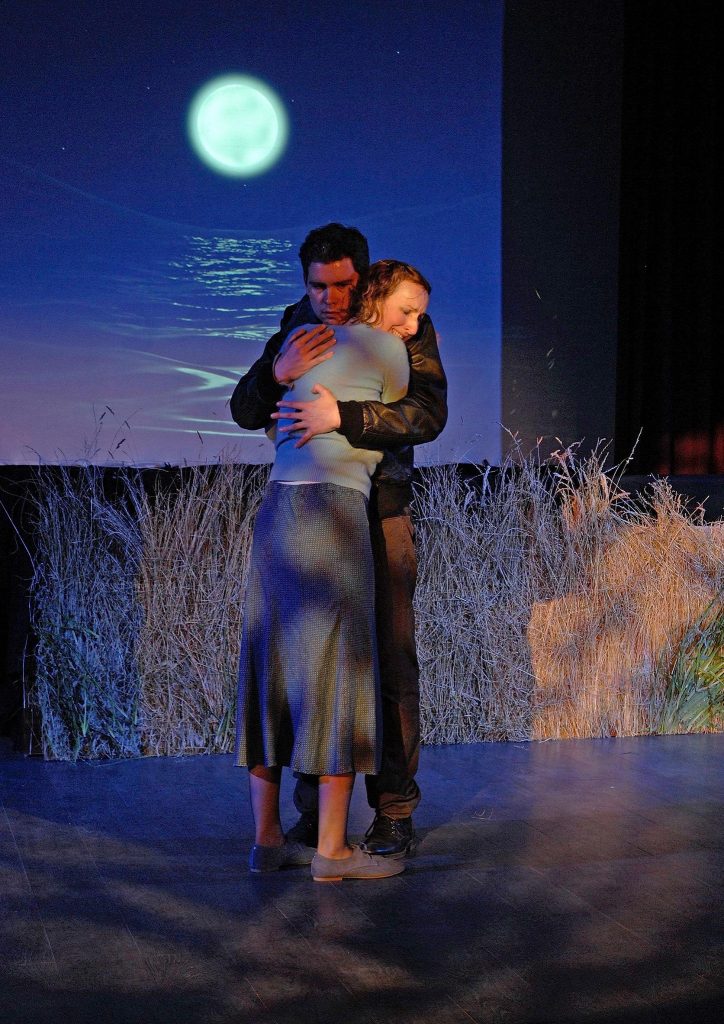

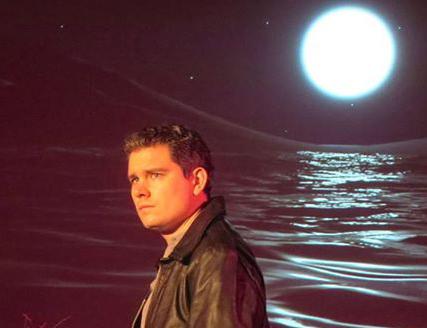
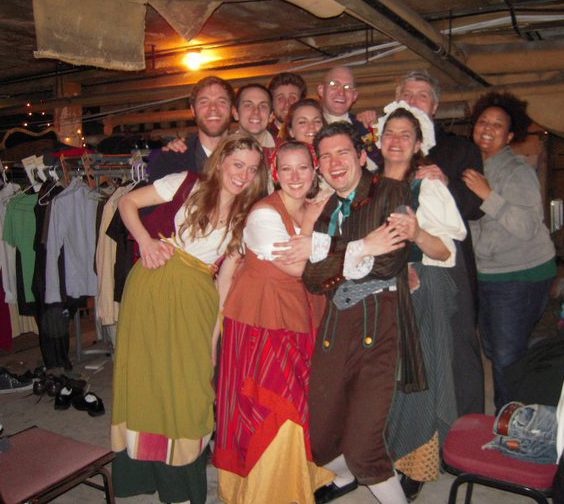
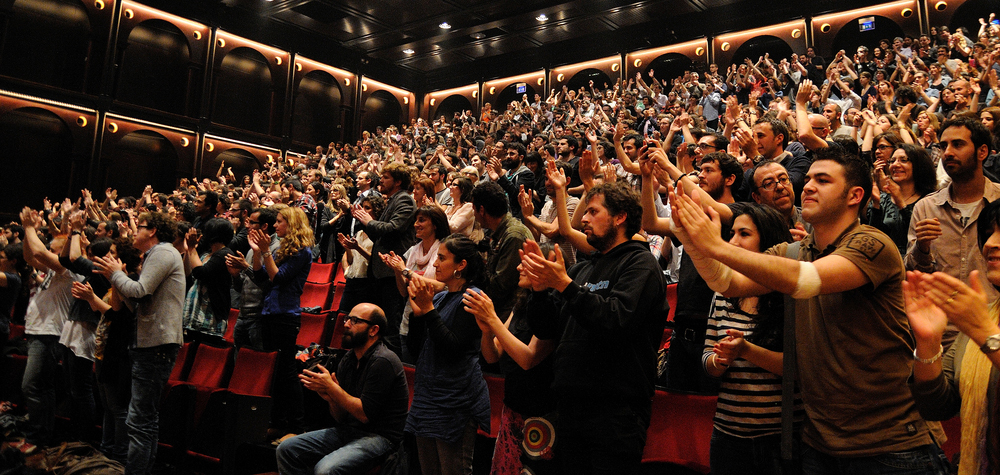
 He’s a bit like the red squirrel, that lovely Irish creature, rather gentle and delightful, who is being routed and pushed aside by his rapacious and rude American cousin, the grey squirrel. The red is now disappearing from Irish woodlands because some fool introduced the grey to his environment, and the grey is much pushier, more aggressive and rather less soulful, and so is taking over and pushing aside gentlemanly ol’ Red.
He’s a bit like the red squirrel, that lovely Irish creature, rather gentle and delightful, who is being routed and pushed aside by his rapacious and rude American cousin, the grey squirrel. The red is now disappearing from Irish woodlands because some fool introduced the grey to his environment, and the grey is much pushier, more aggressive and rather less soulful, and so is taking over and pushing aside gentlemanly ol’ Red.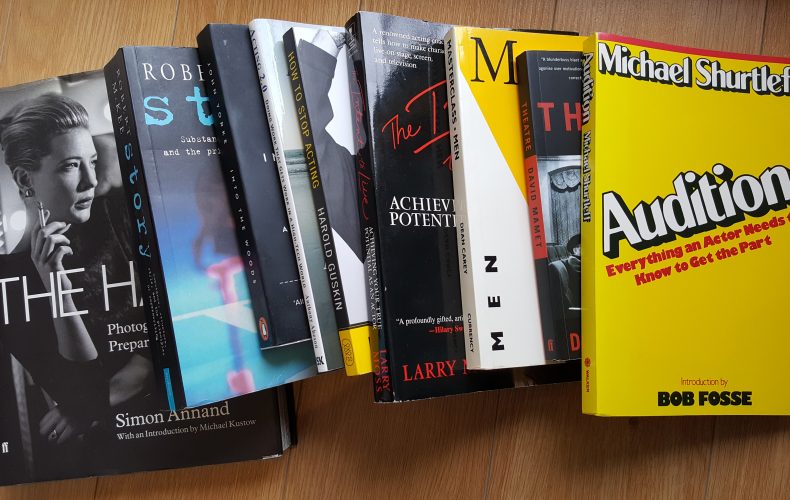
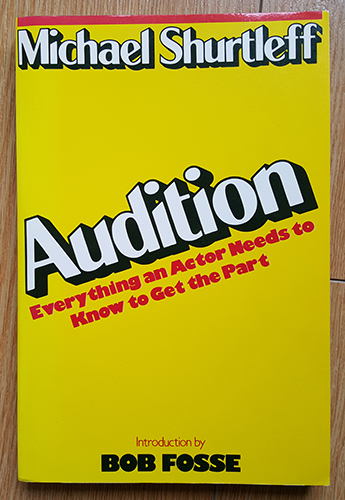 I don’t know if there’s a book that produces more creative juice for an actor when preparing for an audition (or frankly any performance of a script) than
I don’t know if there’s a book that produces more creative juice for an actor when preparing for an audition (or frankly any performance of a script) than 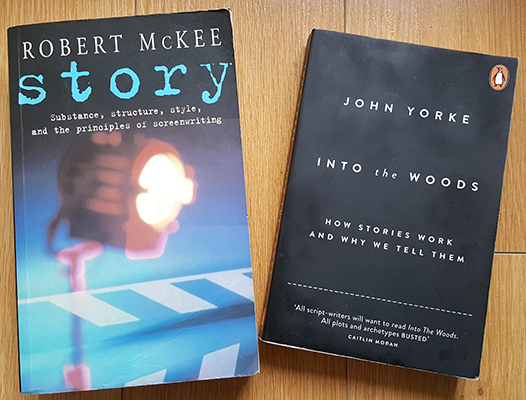 I am a deep believer that actors are storytellers – not puppets on a string, but artists who bring their insight and creativity to bringing a script to life. They owe a honourable duty of care to deliver the writer’s story to the audience as best as they can. To do so, they must understand not just their role in the piece, but the story as a whole. How it is structured, how it builds. As such, I think there are two texts that are truly genius at helping us to look at scripts and divulge their blueprint, find their foundation, see the gorgeous lines of their construction, and those are Story by American screenwriting teacher
I am a deep believer that actors are storytellers – not puppets on a string, but artists who bring their insight and creativity to bringing a script to life. They owe a honourable duty of care to deliver the writer’s story to the audience as best as they can. To do so, they must understand not just their role in the piece, but the story as a whole. How it is structured, how it builds. As such, I think there are two texts that are truly genius at helping us to look at scripts and divulge their blueprint, find their foundation, see the gorgeous lines of their construction, and those are Story by American screenwriting teacher 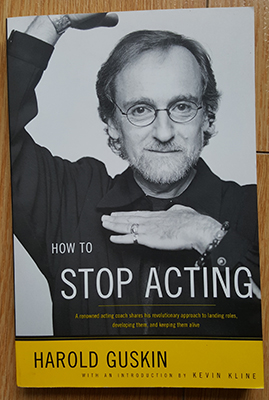 This is a book I have only come across recently, and found it really invigorating.
This is a book I have only come across recently, and found it really invigorating. 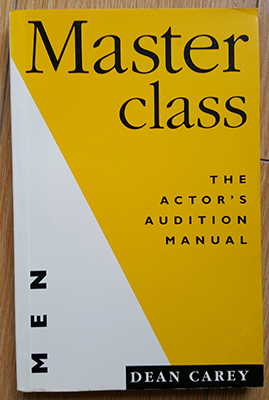 I love this book. I initially picked it up in late ’90s before going to drama school, because it had over 100 monologues in it, so I could find a great one to audition with. Indeed it does. But the gold in this book is the range of hugely practical exercises that its author, the Australian acting teacher
I love this book. I initially picked it up in late ’90s before going to drama school, because it had over 100 monologues in it, so I could find a great one to audition with. Indeed it does. But the gold in this book is the range of hugely practical exercises that its author, the Australian acting teacher 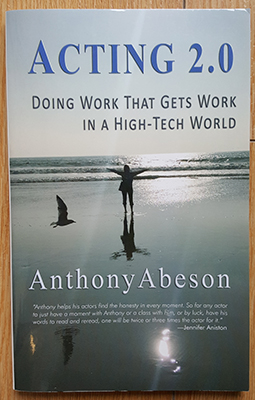 Now I am going to state up front my conflict of interest here: this is the book by my old acting teacher in New York,
Now I am going to state up front my conflict of interest here: this is the book by my old acting teacher in New York, 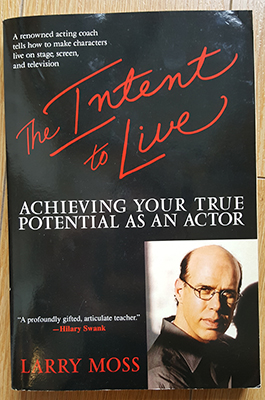 When you are ready to be challenged by a hard-ass teacher, there’s one man to go to –
When you are ready to be challenged by a hard-ass teacher, there’s one man to go to – 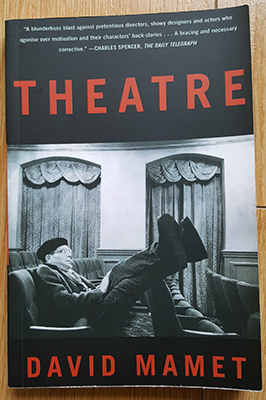 Now obviously Mamet is a master playwright and a very powerful thinker about the craft, and you wouldn’t go wrong reading any of his books.
Now obviously Mamet is a master playwright and a very powerful thinker about the craft, and you wouldn’t go wrong reading any of his books. 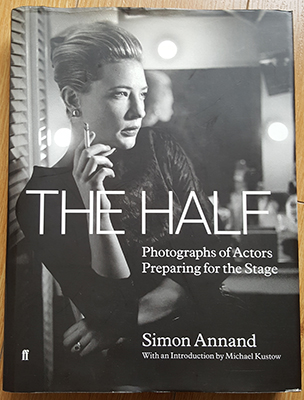 Maybe now you’re done reading – but there’s still one more book to see … and it is gorgeous and spine-tingingly inspiring to look at. It’s
Maybe now you’re done reading – but there’s still one more book to see … and it is gorgeous and spine-tingingly inspiring to look at. It’s 

 We head out the door and west on 23rd Street to 10th Avenue, we’re heading uptown now, so why not use
We head out the door and west on 23rd Street to 10th Avenue, we’re heading uptown now, so why not use  Okay, it’s 12.30pm and I’m hungry now. I could grab a tasty salmon tartine at Le Pain Quotidien on 40th Street, or a quick tuna baguette at a Pret a Manger, but you know what? I want something hot and tasty and cheap and … next door. So I step into the aptly named (cos it’s tiny) Piccolo Cafe, and order #1, a Fettuccine alla Bolognese (with no cheese, thank you very much) and grab a window counter stool to watch the world (and look at the vintage Italian newspapers on the wall). Pretty darn sharp, the pasta comes out, juicily steaming, and we tuck into its homey deliciousness. Yum.
Okay, it’s 12.30pm and I’m hungry now. I could grab a tasty salmon tartine at Le Pain Quotidien on 40th Street, or a quick tuna baguette at a Pret a Manger, but you know what? I want something hot and tasty and cheap and … next door. So I step into the aptly named (cos it’s tiny) Piccolo Cafe, and order #1, a Fettuccine alla Bolognese (with no cheese, thank you very much) and grab a window counter stool to watch the world (and look at the vintage Italian newspapers on the wall). Pretty darn sharp, the pasta comes out, juicily steaming, and we tuck into its homey deliciousness. Yum. Okay, I’m fighting fit for the afternoon … well, almost, let’s grab a cheeky dessert. Only one option here, you can leave your macarons and cronuts, let’s shally down to 38th Street and 6th Avenue, and join the queue (or to speak NYC, get in line) for the best chocolate cookies in the city. They are perfection: fresh-baked in-house, huge, crispy on the outsides, melty-warm on the inside, and frankly one of them is too rich for most men. If it’s a fine dry day, let’s grab them in their paper bag to-go, with your beverage of choice (flat-white, please), and head north two blocks to Bryant Park. Let’s sit by (or if it’s summertime on) the lawn, and enjoy my favourite park in the city, which somehow always manages to breeze midtown madness away and blow any of the city’s stresses off of me. Chill out gazing through the dappled branches of the trees, knowing that Batman definitely hangs out at night on top of that big gothic tower on the south side of the park. (Sure, Central Park is more awesome, but it’s also kind of a big deal, you have to explore into it. Bryant is quite happy to welcome you for a minute or ten. I think that would hurt Central Park’s feelings …)
Okay, I’m fighting fit for the afternoon … well, almost, let’s grab a cheeky dessert. Only one option here, you can leave your macarons and cronuts, let’s shally down to 38th Street and 6th Avenue, and join the queue (or to speak NYC, get in line) for the best chocolate cookies in the city. They are perfection: fresh-baked in-house, huge, crispy on the outsides, melty-warm on the inside, and frankly one of them is too rich for most men. If it’s a fine dry day, let’s grab them in their paper bag to-go, with your beverage of choice (flat-white, please), and head north two blocks to Bryant Park. Let’s sit by (or if it’s summertime on) the lawn, and enjoy my favourite park in the city, which somehow always manages to breeze midtown madness away and blow any of the city’s stresses off of me. Chill out gazing through the dappled branches of the trees, knowing that Batman definitely hangs out at night on top of that big gothic tower on the south side of the park. (Sure, Central Park is more awesome, but it’s also kind of a big deal, you have to explore into it. Bryant is quite happy to welcome you for a minute or ten. I think that would hurt Central Park’s feelings …) Well-fed by 2p.m., let’s take the afternoon for spot of cultural spirit-lifting. First step, nip around the corner of 40th Street to 5th Ave, to the New York Public Library. Say a quick hello to my two regal pals, the lion statues, trot up the steps (exercise done for today), up some more stairs inside (exercise done for tomorrow), and into the stunning beauty of the Rose Reading Room. Nearly 300 foot long, 50 feet high, it’s a great deep-breathing space, filled with a powerful quiet, a church of thought; it’s just the most marvellous place in the city if you need a great wooden table to sit and study at, knowing how many other minds have turned their cogs and scratched their pencils here in this mighty echoing space. Try not to squeak the chair as you leave …
Well-fed by 2p.m., let’s take the afternoon for spot of cultural spirit-lifting. First step, nip around the corner of 40th Street to 5th Ave, to the New York Public Library. Say a quick hello to my two regal pals, the lion statues, trot up the steps (exercise done for today), up some more stairs inside (exercise done for tomorrow), and into the stunning beauty of the Rose Reading Room. Nearly 300 foot long, 50 feet high, it’s a great deep-breathing space, filled with a powerful quiet, a church of thought; it’s just the most marvellous place in the city if you need a great wooden table to sit and study at, knowing how many other minds have turned their cogs and scratched their pencils here in this mighty echoing space. Try not to squeak the chair as you leave … … and from one august institution to another: we cut east to Madison Avenue and down to 36th Street, where we enter my favourite museum in the city, the Morgan Library. Of course the Guggenheim and MOMA are amazing for modern art, you can get lost in the Met, and I also have a soft spot for
… and from one august institution to another: we cut east to Madison Avenue and down to 36th Street, where we enter my favourite museum in the city, the Morgan Library. Of course the Guggenheim and MOMA are amazing for modern art, you can get lost in the Met, and I also have a soft spot for  Okay, it’s 5p.m., evening is calling, so it’s time to start heading back downtown. Let’s keep nipping down the relatively quiet Madison Avenue, until we hit the north-east corner of Madison Square Park. Mmmm, yes, I’m hungry too. Let’s walk south along the winding paths to the silver-grey shack with the sand and fairy lights, and get in line (this is New York, people) for a Shake Shack burger. Yes, there are other outlets in the city, and even in the airport now, so maybe it’s not so extraordinary. But (old man voice) “I remember when this was the only Shake Shack in the city, and it was only open in the summer. Arr.” And there still is something special about people’s excitement in the queue (sorry, in line) and then the buzz (the actual electric buzz of the alerting device) of seeing your burger is ready, and eating it out in the grassy open as the sun starts setting over the skyscrapers. (Two tricks: I never eat the last bite of a Shake Shack burger, for some reason it’s always disappointingly slimy-greasy. Put it down with a bow of respect to the other bites of salty-niceness. And don’t feed the squirrels. They’re NYC squirrels. They’ll just come and take your food. One jumped right into my lap once. Felt his claws through my jeans.)
Okay, it’s 5p.m., evening is calling, so it’s time to start heading back downtown. Let’s keep nipping down the relatively quiet Madison Avenue, until we hit the north-east corner of Madison Square Park. Mmmm, yes, I’m hungry too. Let’s walk south along the winding paths to the silver-grey shack with the sand and fairy lights, and get in line (this is New York, people) for a Shake Shack burger. Yes, there are other outlets in the city, and even in the airport now, so maybe it’s not so extraordinary. But (old man voice) “I remember when this was the only Shake Shack in the city, and it was only open in the summer. Arr.” And there still is something special about people’s excitement in the queue (sorry, in line) and then the buzz (the actual electric buzz of the alerting device) of seeing your burger is ready, and eating it out in the grassy open as the sun starts setting over the skyscrapers. (Two tricks: I never eat the last bite of a Shake Shack burger, for some reason it’s always disappointingly slimy-greasy. Put it down with a bow of respect to the other bites of salty-niceness. And don’t feed the squirrels. They’re NYC squirrels. They’ll just come and take your food. One jumped right into my lap once. Felt his claws through my jeans.) It’s 6p.m. And the city is starting to get hectic again as people get out of work and head to activities in the bright lights. We’re walking down Broadway, past the Flatiron building, down to and through Union Square, and down to 12th Street, where we are welcomed by the red banner of the Strand Bookstore. They say it’s 18 miles of books, and its packed shelves, the top rows too high to reach (without a staff-member clambering up a ladder), and its second-hand nature meaning you’ll often find a book here that’s been on your list for ages that’s (a) out-of-print and (b) on sale. I’m always enticed and amazed by the depth of their theatre and movie book section; their comicbook section used to be about the level of an average yard sale, but it has improved dramatically; and I think a book lover on any topic – history, art, sports and definitely novels – will be in bliss caressing the shelves and likely to leave with a heavy bag. And they have great events with authors in their rare book space: I once saw Paul Auster (my favourite novelist) discussing Beckett there with Edward Albee. (Now that is an “Only-in-New-York” experience.) Yes, there are many great bookshops in NYC (such as the impeccable
It’s 6p.m. And the city is starting to get hectic again as people get out of work and head to activities in the bright lights. We’re walking down Broadway, past the Flatiron building, down to and through Union Square, and down to 12th Street, where we are welcomed by the red banner of the Strand Bookstore. They say it’s 18 miles of books, and its packed shelves, the top rows too high to reach (without a staff-member clambering up a ladder), and its second-hand nature meaning you’ll often find a book here that’s been on your list for ages that’s (a) out-of-print and (b) on sale. I’m always enticed and amazed by the depth of their theatre and movie book section; their comicbook section used to be about the level of an average yard sale, but it has improved dramatically; and I think a book lover on any topic – history, art, sports and definitely novels – will be in bliss caressing the shelves and likely to leave with a heavy bag. And they have great events with authors in their rare book space: I once saw Paul Auster (my favourite novelist) discussing Beckett there with Edward Albee. (Now that is an “Only-in-New-York” experience.) Yes, there are many great bookshops in NYC (such as the impeccable  Okay gone 7p.m., it’s the evening in New York, so that means: you’re going to see a show. (Phew, thankfully you already bought your ticket!) For some people, that would mean leaping in a cab back up to Broadway, and that’s fun, but my pick is for us to keep walking west on 12th Street, then south on 5th Avenue, cut through the NYU students and general amusing weirdos in Washington Square Park to head west on 4th Street until we take a left on Barrow Street, and arrive at the theatre of the same name. It doesn’t look like much from the outside – wait, is this a school hall? But once we get inside this magic little venue, intimately seating 199, each time set up differently, you know you are going to see a cracking good play, as programmed by Scott Morfee and Tom Whirtshafter (and maybe if we’re lucky directed by David Cromer). I’ve seen an terrific run of shows there: Cromer’s Our Town, Tribes and The Effect; The Flick; Every Brilliant Thing, each one intriguing, theatrical and impactful.
Okay gone 7p.m., it’s the evening in New York, so that means: you’re going to see a show. (Phew, thankfully you already bought your ticket!) For some people, that would mean leaping in a cab back up to Broadway, and that’s fun, but my pick is for us to keep walking west on 12th Street, then south on 5th Avenue, cut through the NYU students and general amusing weirdos in Washington Square Park to head west on 4th Street until we take a left on Barrow Street, and arrive at the theatre of the same name. It doesn’t look like much from the outside – wait, is this a school hall? But once we get inside this magic little venue, intimately seating 199, each time set up differently, you know you are going to see a cracking good play, as programmed by Scott Morfee and Tom Whirtshafter (and maybe if we’re lucky directed by David Cromer). I’ve seen an terrific run of shows there: Cromer’s Our Town, Tribes and The Effect; The Flick; Every Brilliant Thing, each one intriguing, theatrical and impactful. It’s heading towards 11p.m., we’re pumped full of ideas – let’s grab a nightcap. We’re in the Village, the place is sprawling with bars – but let’s go to a personal favourite: a 3 minute walk up 7th Avenue and onto Christopher Street, then down the rickety stairs into Fat Cat. Sure, it’s kind of a dive, but where else can you grab a drink, play ping-pong AND listen to some pretty darn good live jazz at the same time? Scruffy greatness.
It’s heading towards 11p.m., we’re pumped full of ideas – let’s grab a nightcap. We’re in the Village, the place is sprawling with bars – but let’s go to a personal favourite: a 3 minute walk up 7th Avenue and onto Christopher Street, then down the rickety stairs into Fat Cat. Sure, it’s kind of a dive, but where else can you grab a drink, play ping-pong AND listen to some pretty darn good live jazz at the same time? Scruffy greatness.